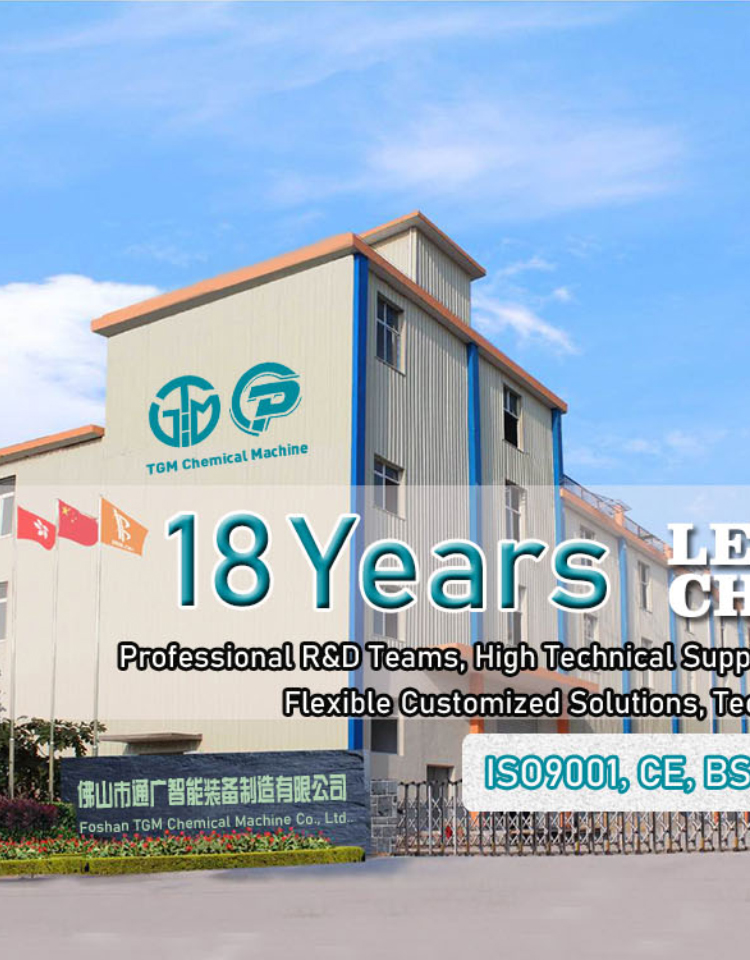Email cannot be empty
Password cannot be empty
Email format error
Email cannot be empty
Email already exists
6-20 characters(letters plus numbers only)
The password is inconsistent
Email format error
Email cannot be empty
Email does not exist
6-20 characters(letters plus numbers only)
The password is inconsistent


The Art and Science of Producing High-Quality CPVC Cement
If you work in plumbing, fire sprinkler systems, or industrial fluid handling, you know CPVC (Chlorinated Polyvinyl Chloride) as a go-to material for hot and cold water distribution. Its high-temperature resistance and durability are unmatched. But what holds these critical systems together? The answer is a specially formulated adhesive: CPVC cement.
Producing this cement is not just about mixing chemicals; it's a precise science that ensures the safety, reliability, and longevity of the piping systems we depend on every day. In this blog, we'll pull back the curtain on the production process of high-quality CPVC cement.
Understanding the Goal: What is CPVC Cement?
First, it's crucial to clarify that "cement" is a bit of a misnomer. CPVC cement is not a glue that sits between the pipe and fitting. It is a solvent weld. Its primary function is to chemically melt the surfaces of the CPVC pipe and fitting. When joined, these two melted surfaces fuse, creating a permanent, homogeneous, and leak-proof bond as the solvents evaporate.
Key Ingredients in the CPVC Cement Formula
A successful CPVC cement formulation is a balanced blend of several key components:
-
Solvents: This is the heart of the cement. A blend of strong solvents like Tetrahydrofuran (THF) and Cyclohexanone is typically used. Their job is to rapidly dissolve the CPVC polymer, making the surfaces soft and malleable for welding.
-
CPVC Resin: The cement itself contains dissolved CPVC resin. This ensures that the joint is not just fused with solvent but is actually being "re-welded" with new CPVC material, maintaining the chemical integrity and pressure rating of the system.
-
Fillers: Materials such as silica or titanium dioxide are added to control viscosity, provide body to the cement, and help create a gap-filling bond. They also give the cement its characteristic color (often orange or yellow) for easy visual inspection.
-
Stabilizers: These additives prevent the degradation of the CPVC resin during storage and ensure the product maintains its performance over its shelf life.
-
Viscosity Modifiers: These chemicals ensure the cement has the right consistency—not too runny, not too thick—for a smooth, even application that doesn't drip excessively.
The Production Process: A Step-by-Step Overview
Manufacturing CPVC cement is a controlled, multi-stage process.
Step 1: Raw Material Inspection & Weighing
Quality begins here. All incoming raw materials are rigorously tested against specifications. Precise amounts of solvents, resin, and additives are weighed according to the proprietary formula.
Step 2: Mixing and Dissolving
The process typically begins in a closed, high-shear mixing vessel to control solvent evaporation (which are volatile organic compounds or VOCs). The solvents are added first, followed by the CPVC resin. The mixture is agitated for several hours until the resin is completely dissolved, creating a clear, viscous base solution.
Step 3: Incorporation of Additives
Once the resin is fully dissolved, the fillers, stabilizers, and other modifiers are slowly added to the mix. This stage is critical to ensure a uniform, lump-free consistency. The mixing continues until the product is perfectly homogeneous.
Step 4: Quality Control (QC) Testing
Before packaging, a sample from the batch is taken to the QC lab for critical tests:
-
Viscosity: Ensures proper application.
-
Set Time & Cure Time: Measures how fast the joint initially sets and how long it takes to achieve full strength.
-
Tensile Strength: The bonded joints are tested to failure to ensure they meet or exceed industry standards (e.g., ASTM F493).
-
Non-Volatile Content: Measures the amount of solid CPVC resin left after the solvents evaporate.
Step 5: Packaging
Once the batch passes all QC checks, it is transferred to filling lines and packaged into its final containers—typically metal tins or plastic jars with attached brushes for easy application. Packaging must be airtight to prevent solvent evaporation and skinning.
Why the Formulation Matters
Using a certified, high-quality CPVC cement is non-negotiable. A substandard product can lead to:
-
Incomplete Welds: Causing joint failure and leaks.
-
Reduced Pressure Rating: Compromising the entire system's integrity.
-
Premature System Failure: Leading to costly water damage, downtime, and repairs.
Manufacturers must ensure their formulations are compatible with specific CPVC pipe brands (e.g., Corzan®, FlowGuard Gold®) and are certified by relevant bodies like NSF International for potable water applications.
Conclusion
The production of CPVC cement is a sophisticated process where chemistry and engineering meet. It’s a testament to how a carefully crafted chemical product provides the invisible strength behind the infrastructure of modern buildings. By understanding the precision involved in its creation, installers and engineers can appreciate the critical role this specialized solvent cement plays in ensuring safe and reliable CPVC piping systems for years to come.

